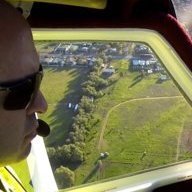-
Posts
660 -
Joined
-
Last visited
-
Days Won
1


Keenaviator replied to onetrack's topic in Aircraft Incidents and Accidents

Keenaviator replied to Cosmick's topic in Aircraft Incidents and Accidents

Keenaviator replied to Keenaviator's topic in Instruments, Radios and Electronics

Keenaviator replied to Keenaviator's topic in Instruments, Radios and Electronics

Keenaviator replied to Kyle Communications's topic in AUS/NZ General Discussion

Keenaviator replied to Kyle Communications's topic in AUS/NZ General Discussion

Keenaviator replied to jackc's topic in Governing Bodies

Keenaviator replied to KRviator's topic in Aircraft Incidents and Accidents

